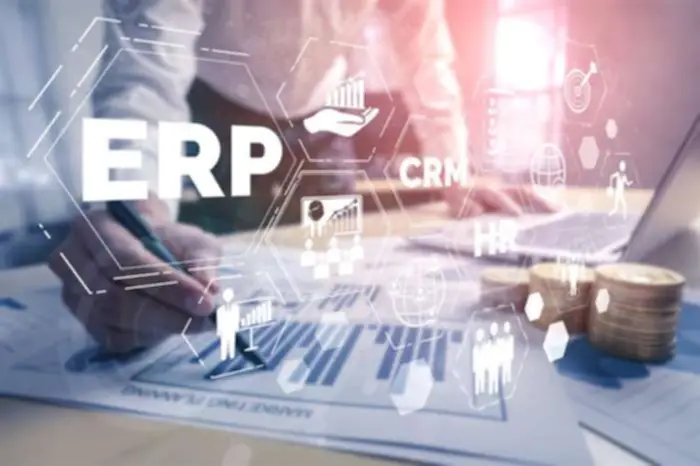CI/CD (Continuous Integration and Continuous Delivery) is a software improvement methodology for often delivering apps to prospects by automating numerous phases of app improvement. The key ideas of CI/CD are continuous integration, steady supply, and steady deployment. It’s necessary to inform apart between Continuous Delivery and Steady Deployment. Whereas the phrases are often used interchangeably, they’ve distinct variations. Steady Supply focuses on automating the software program delivery process to the staging or pre-production environment. In distinction, Continuous Deployment automates the complete https://www.globalcloudteam.com/ course of, together with the discharge of recent features or updates to the manufacturing environment.
With a robust CD pipeline, groups can shortly iterate and adapt, ensuring optimal performance and performance of the product at all times. In distinction, more conventional organizations could discover deployment matches higher with their structured procedures. It is essential for teams to research their workflow and decide which method best suits their organizational tradition and long-term targets.
Whether Or Not it’s fashionable containerized apps or older methods, Octopus seamlessly handles software program delivery throughout multi-cloud, Kubernetes, knowledge facilities, and hybrid setups. We’re additionally huge on governance, danger, and compliance (GRC), helping Platform Engineering groups enhance the Developer Expertise (DevEx). By starting with small, non-critical providers or options, teams can slowly enhance their confidence in the automated pipeline and scale Continuous Deployment across the organization over time. CI aims to maintain a constant and secure codebase, making certain that new code adjustments don’t break the prevailing performance.
A software program improvement team’s measurement is decided by the application’s dimension and complexity. Our groups continuous delivery maturity model vary from two to 26 folks; most teams have 4 to eight people. Previously, each utility sometimes had fewer than six releases a year. For each release cycle, we gathered the necessities at the cycle’s starting.
Measure Stability & Performance
Everybody, from builders to operations to product managers, can see the standing of releases, lowering silos and minimizing deployment delays. CD instruments automate these checks, including code high quality scans, security validations, and coverage enforcement, maintaining the pipeline flowing efficiently. CD tools run complete consumer acceptance tests, efficiency checks, and complex eventualities. This stage of test protection helps catch bugs early, lowering the danger of defective code slipping into production.
- This contains automated testing, model management, and integration exams, each enjoying a vital function within the CD pipeline.
- Constructing fashionable purposes usually entails juggling tightly coupled providers, APIs, and legacy methods.
- Imagine a world the place your new features and updates are seamlessly built-in and deployed, decreasing the time to market and offering an enhanced consumer expertise.
- The rise of AI know-how has created heated ethical discussions, particularly about the maintenance of biases in coaching information.
- Incorporating CD must be rigorously thought of, weighing the potential benefits in opposition to the challenges and making certain that it aligns with your organisation’s goals and capabilities.
A CI/CD pipeline is a set of tools and processes that automate the continuous integration and supply of software program. It works properly within an Agile method to software program improvement and can be contrasted towards the more static Waterfall method. In Waterfall, rollbacks could be time-consuming and messy as a result of the process requires reworking earlier levels when issues are found late in growth.
Platform Team: Decreasing Cognitive Load And Enabling Focus

To perceive how the continuous delivery course of works, it is first essential to outline the method of continuous integration. Steady integration is an important prerequisite for continuous delivery and entails continually integrating new code into a single repository that is straightforward to entry and shared between group members. Once new code has been delivered to a centralized repository by way of continuous integration, continuous supply entails taking the saved code and continuously delivering it to manufacturing. All of those exams are automatically triggered each time new code is launched, ensuring that every replace is automatically prepared for update and release.
Arguments Towards Steady Deployment And Rebuttals
With the continuous delivery strategy, all code modifications are deployed to a testing and/or production setting kotlin application development following the build stage the place they are examined and prepared for production. This strategy allows software program builders to launch new options, bug fixes, and other product updates in a quick and sustainable method that causes minimal disruption to the shoppers utilizing the product. To keep competitive, organizations should be proactive in getting ready for the evolving landscape of Steady Delivery and deployment. This preparation entails investing in training, leveraging cutting-edge instruments, and fostering a tradition of collaboration amongst all team members. As software program growth practices proceed to alter, organizations that adapt could have a major edge, enabling them to deliver high-quality software program that meets customer wants more effectively.
Shared accountability for deployment also promotes a culture of accountability and belief. Builders are more engaged within the deployment course of and perceive the influence of their adjustments on the manufacturing environment. This collaborative environment improves the deployment course of and enhances general staff morale and productiveness.

By continually testing your code as it’s developed, you can dramatically improve the reliability of your testing procedures and in the end enhance the quality of your last product. In conclusion, steady delivery could be a priceless follow for cell app development groups, as it allows for sooner and more frequent releases, improved collaboration, increased agility, and improved quality. Nevertheless, it’s necessary to fastidiously evaluate the professionals and cons of continuous delivery to determine whether it’s the proper fit on your group or project. Steady Supply (CD) is a software growth method that automates the constructing, testing, and packaging of code so it’s always ready for launch. However, code adjustments sit in a staging or pre-production surroundings, ready for manual approval before going live. IT leaders might need to weigh the pros and cons of steady supply and determine whether it’s a proper fit for their organizations.
CD advocates declare that it lets organizations quickly, effectively, and reliably convey service enhancements to market and finally stay a step ahead of the competition.1 This sounds nice. Nonetheless, implementing CD can be challenging— especially within the context of a large enterprise’s existing developmentand-release surroundings. Implementing continuous monitoring practices helps organizations detect anomalies and respond proactively.
You want a service that may handle CD and CI, or you should use a separate service for every task. There are many choices to choose from, and deciding which fits you is decided by the languages you employ, useful options, integration with other instruments, and pricing. Practising CD as part a common DevOps technique helps you better measure and improve sure DevOps key metrics important to your project. This article focuses on Steady Delivery (CD), its benefits, and the way you and your staff can start utilizing it along with your initiatives.
Moreover, the combination of Continuous Supply practices in a standard setting may require a phased approach, allowing groups to progressively incorporate agile methodologies whereas sustaining their established processes. This careful balancing act can lead to a more profitable transformation, making certain that the group stays aligned with its strategic aims whereas embracing the benefits of modern improvement practices. Continuous Supply is a software engineering method that aims to make sure code changes are routinely prepared for manufacturing release.
The pipeline automatically sets up the take a look at environment and notifies the testers with e mail containing the information required to entry the deployed utility. Implementing a Continuous Delivery mannequin clearly means more than simply bringing in some instruments for Launch Automation. No matter how good those tools are, this is a transformation by which people are the key for to success. It’s price emphasising this level – your professionals, from Growth and Operations, will actually have to work together. And that most likely requires a cultural change, with new roles and new processes for everybody in IT.
This makes growth extra environment friendly and the client receives the product earlier, even when it’s not yet finished. Continuous delivery supplies the developer with suggestions via automated exams, which usually verify the build after each change to the source code. As noted by TechTarget, continuous supply requires code be pushed to a staging surroundings at common intervals, permitting groups to test out new features with out affecting the baseline functionality of the software. This also allows project stakeholders to persistently check that in-development software meets authentic objectives, notably business-focused objectives.
